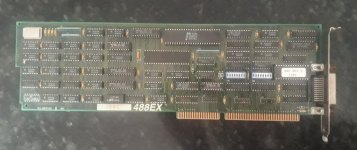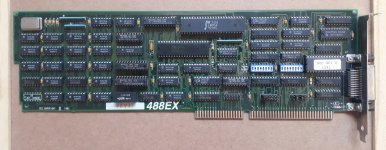Do you have the software (or a manual) for the card?
Yes, both software and manual, if anyone are willing to take a look, just PM me, or look
here and also
here.
I wonder if the NEC µPD7210 is intended for the empty DIP socket
My original picture was terrible, there's no empty socket, it's indeed a soldered NEC D7210C. Also a nice and rare IC (at least from what I've seen), take a look at the one on top with the Integrate symbol, for a Mathematician as I'm it's quite nice to see such a thing.
The Victor PC (aka Sirius) could also use its parallel port as a GPIB connection
The manual from the 488EX states that the board is capable of emulate a PC Parallel and Serial port, with appropriate code, the manual also have examples of various languages for implement of several uses. It's like you guys said, it's a interface with multiple capabilities
I have a suitcase-sized 40MB hard disk (Shugart SA4000 series) with a controller done in LSTTL that connects to a GPIB host.
I wonder the beautiful sound from this Shugart, should be something very unique. The disk is working?
.
2nd vote for HP / HP-86 Interfacing! But of course you would need one to hook up
Very fun use! But unfortunately I don't have anything like this here, not even possible to buy, there are nothing like this to sale around here. I will start looking for GPIB printers, maybe, a long maybe, I could find something here.
Thank you all for the reply, a lot of information and ideas!


